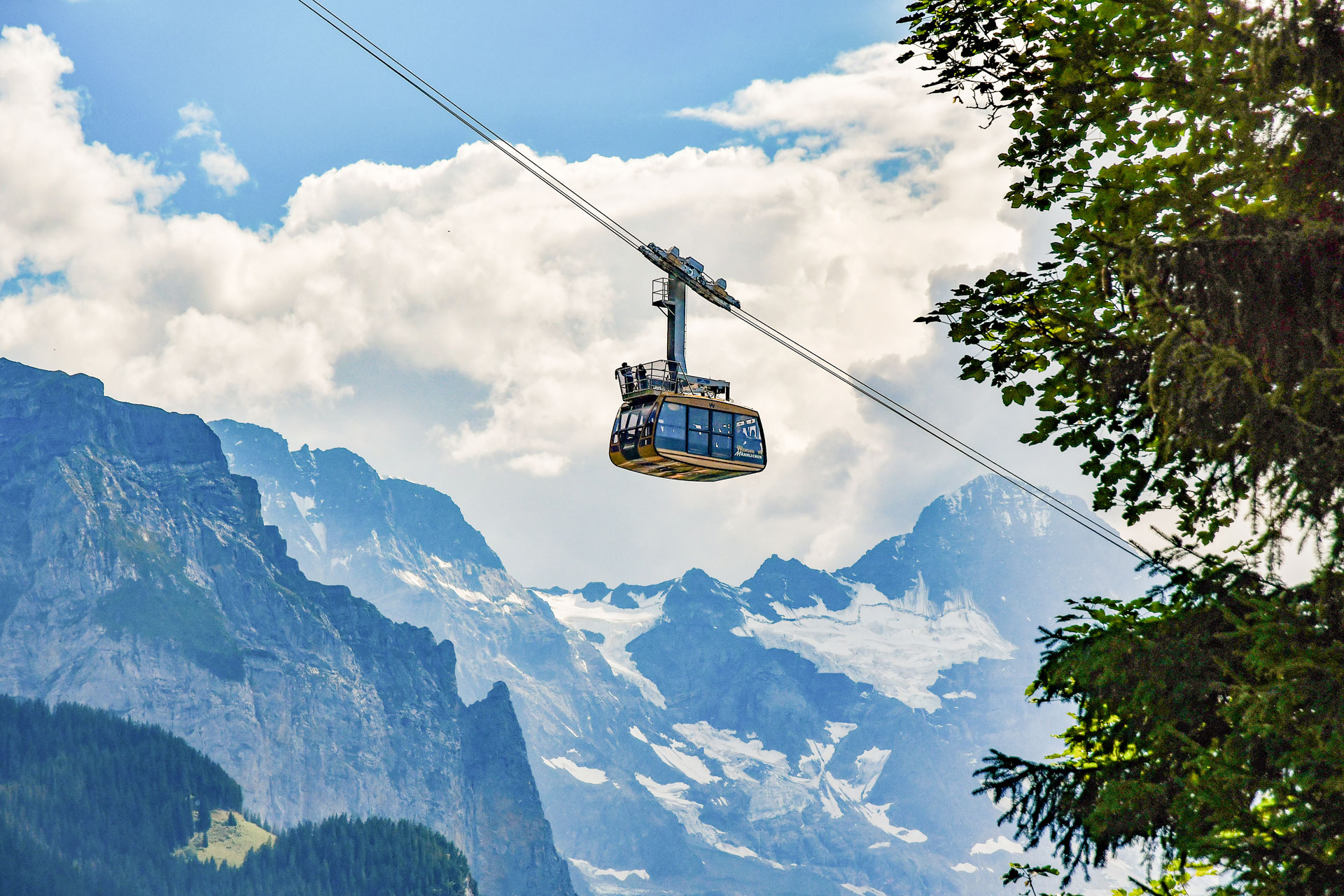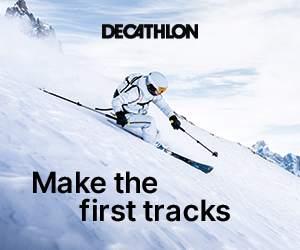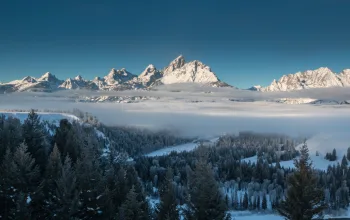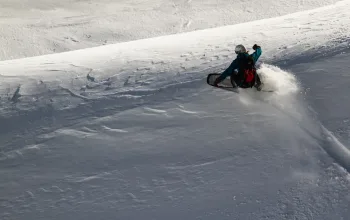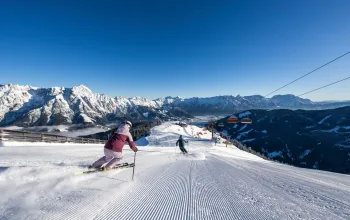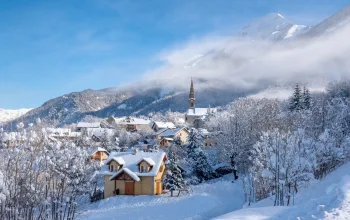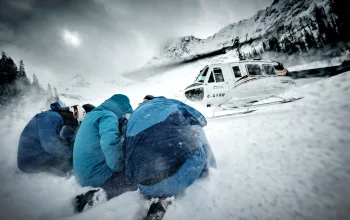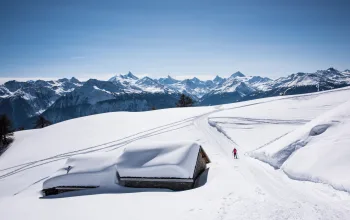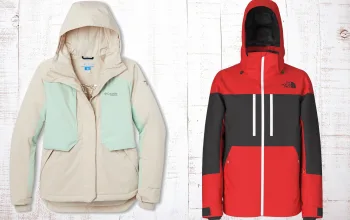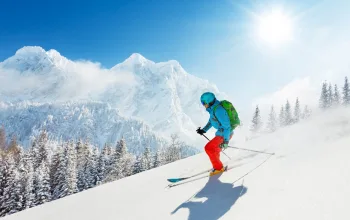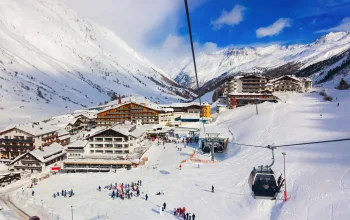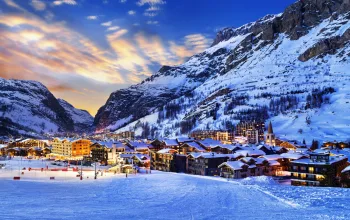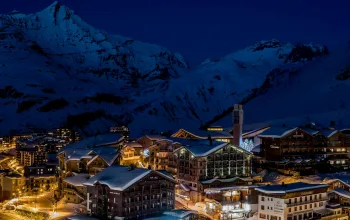It’s sad to think late-season skiing might be an endangered pastime, but the science can make for pretty grim reading. A 2017 report in the European Geosciences Union journal predicted alpine ski resorts would lose up to 70 percent of their snow cover by 2100, depending on humanity’s success at limiting global warming to below 1.5C. Since then, progress on that goal has not exactly been encouraging.
Is it all doom and gloom for wintersports lovers? Not exactly. You can still find good snow with a little strategic thinking. Choose a resort with a high base above 2,000m, north-facing slopes and a modern snow canon infrastructure, and you’ll maximise your chances of the white stuff being in top-notch condition. Book last-minute (when you know there has been a dump) or hedge your bets on the snow-sure dates of mid-January to mid-February and you’ll be further improving your chances.

But another strategy is to change your mindset. Do you really need to ski everyday from first lift to last? Or would you be happy with mixing things up a little, combining your skiing with alternative winter activities if the snow is poor? From downhill tobogganing and winter hiking to wellness luxury and gastronomic experiences, ski resorts across the globe are vying to diversify their offerings. The logic is sound. If there’s less snow around, holidaymakers won’t get bored because they’ll be far too busy in the sauna, Michelin starred restaurant or paragliding school.
Will this strategy work? And how will the ski-pass-buying public respond to this new reality? Nobody really knows, but the future of the ski holiday is likely to be a more eclectic medley of activities than its current one-dimensional style. Bring on the variety.
Aiming high
Like a time traveller to this futuristic new reality, I’m here in Jungfrau to experience a ski holiday with a mixed-bag of surprises thrown in. The plan is simple: four days in total, skiing for two days in the iconic Grindelwald-Wengen resort, and then two days of extra-curricular adventure mayhem in Interlaken, including kayaking, paragliding and snowshoeing.
“I came here in the 1980s on a gap year and I still haven’t left.” The words of our Aussie ski guide John sum up the allure of the legendary Grindelwald-Wengen ski resort. It’s day one of my trip and I’m flying downhill from Eigergletscher (2,333m) towards Kleine Scheidegg (2,061m), carving immaculately-groomed, cruisey red runs as the cloud lifts across a Swiss skyline of 4,000m giants. Crisp alpine air fills my lungs, the taste of elderflower Ricola lingers on my lips, and the mountain silence is broken only by that satisfying crunch of skis edging into the hillside.
The alpine scenery is second to none. A trio of world-renowned peaks - the Eiger (3,970m), Mönch (4,107m) and Jungfrau (4,158m) – serve up a bewilderingly-pretty backdrop of alpine grandeur. It might be the most diminutive of the trio, but it’s the Eiger’s iconic North Face that really steals the show. This awe-inspiring wall of rock and ice is an uninterrupted 1,800m of brutal verticality, and skiing in front of it feels like a rite of passage.

Not only is the scenery world-class, the skiing infrastructure is too. Everything is state-of-the-art here, thanks to a mega 470 million Swiss Franc investment in 2020. The super-slick Eiger Express gondola can carry 2,200 passengers per hour, whisking them 6.5km from the ultra-modern Grindelwald Terminal (which is part luxury mall, part super-efficient transport hub) to the Eigergletscher (2,333m) in just 15 minutes, while the rest of the resort is blessed with quick gondolas, efficient chair lifts, mountain trains and everything else a skier could possibly need.
After several slices of deep pan pizza, two cappuccinos and one large glass of Rivella at the Bergrestaurant Kleine Scheidegg, I spend the afternoon exploring more of the resort’s 104km of pistes. The moderately steep reds around Gummi, Honegg, Tschuggen and Arven strike a beautiful compromise for me as an intermediate – exciting and challenging, without ever feeling the end is nigh. But I can’t stay in my comfort zone all day, as John guides us down the Lauberhorn descent, an iconic race in the Ski World Cup calendar. Pros thunder down the course in just two and half minutes at an average speed of 110km/hr. We’re far more pedestrian, but it still feels epic to pretend.
Branching out
A few hours later and I’m wandering around Wengen on foot. Perched on a sunny shelf above the Lauterbrunnen valley, it’s a quiet village with an authentic alpine vibe. There are no cars here, and the centre is all traditional wooden houses, Victorian-style hotels and postcard-perfect chalets, with an oddly British-centric heritage. Brits have been skiing at Wengen for over a century and there’s even an Anglican church in the village. Back inside, I warm up in the indulgent Finnish sauna at Beautsite Park Hotel, before dining on a weird dinner of fried chicken and apple-y potato salad.
Day two is a wash-out, with low-cloud sadly ruining the visibility for skiing. A visit to the Jungfraujoch (3,454m), the roof of Europe - the highest railway station in the continent, perched on a rocky platform between Mönch and Jungfrau – is also off the cards. But I don’t mind. Instead I transfer from Wengen to Interlaken, check-in to the Hotel Artos and prepare for my upcoming two days of non-skiing adventure.

The next 48 hours are a blur of wintry adrenaline activities, without a ski boot or pair of ski goggles in sight. By day my kayak glides over the translucent waters of Lake Brienz, floating in a nirvana between the glacial lakes and the snow-capped mountains, like a meditative dream. By night I’m grilling up slabs of gooey cheese from an inflatable boat on the super-quirky Raclette Rafting experience. Next my feet leave the ground and I’m circling upwards into the sun-drenched blue skies above Interlaken like a soaring bird, before spinning, speeding and swirling downwards in a spiral of paragliding perfection. And finally I’m snowshoeing uphill from Lombachalp through peaceful woodland to a snowy peak with grandstand views of the Eiger, Mönch and Jungfrau, as if it’s one last chance to say goodbye to some old friends.
It’s a crazy itinerary, but an exhilarating one. Is variety the spice of (skiing life)? Well, it certainly adds flavour to the classic winter holiday.
James Forrest was a guest of Switzerland Tourism, Jungfrau Region Tourism and Interlaken Tourism, staying at Beausite Park Hotel & Spa in Wengen and Hotel Artos in Interlaken. Activities were provided by Alpin Air, Hightide Kayak School and Outdoor.



